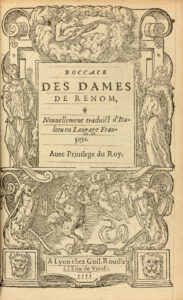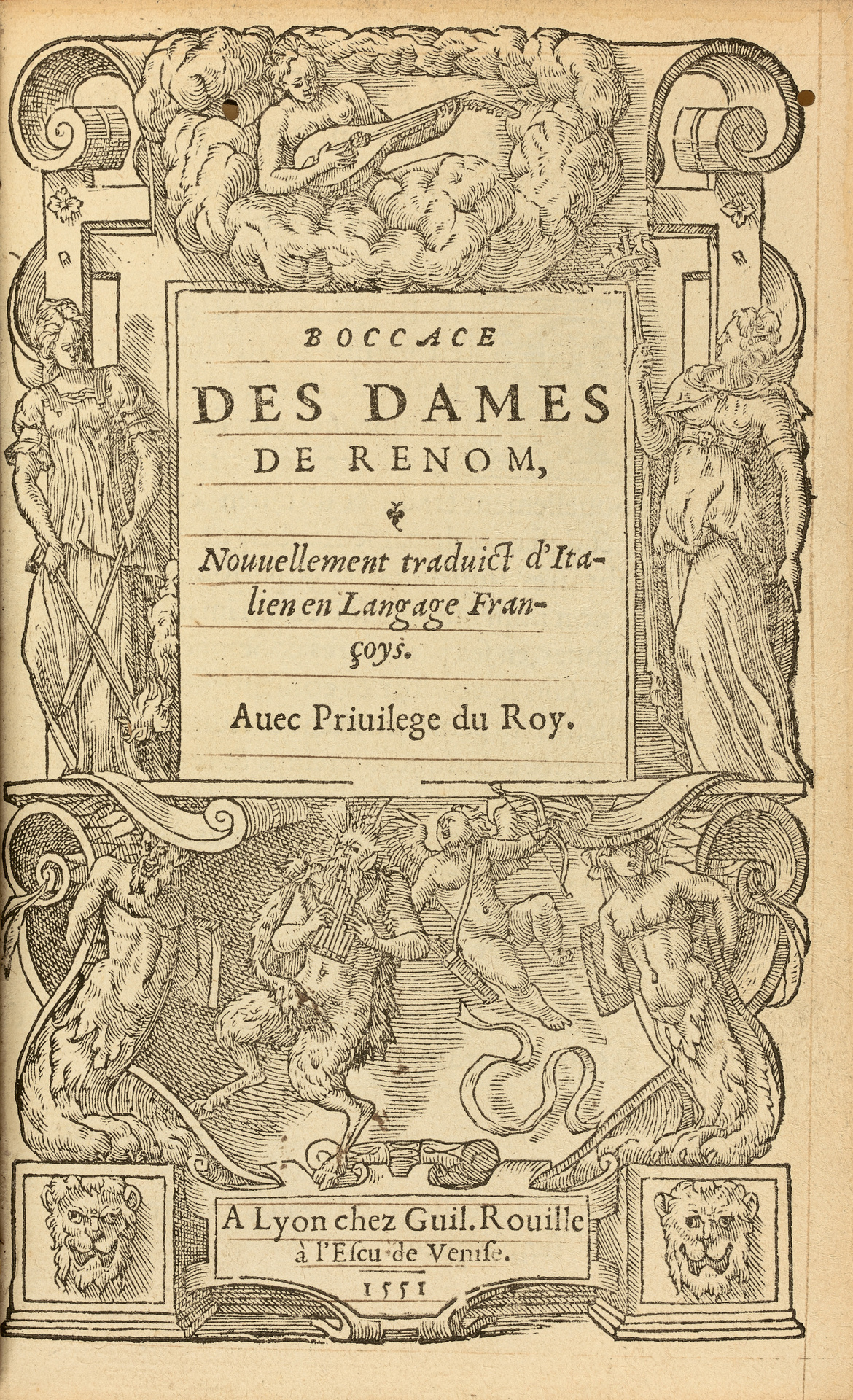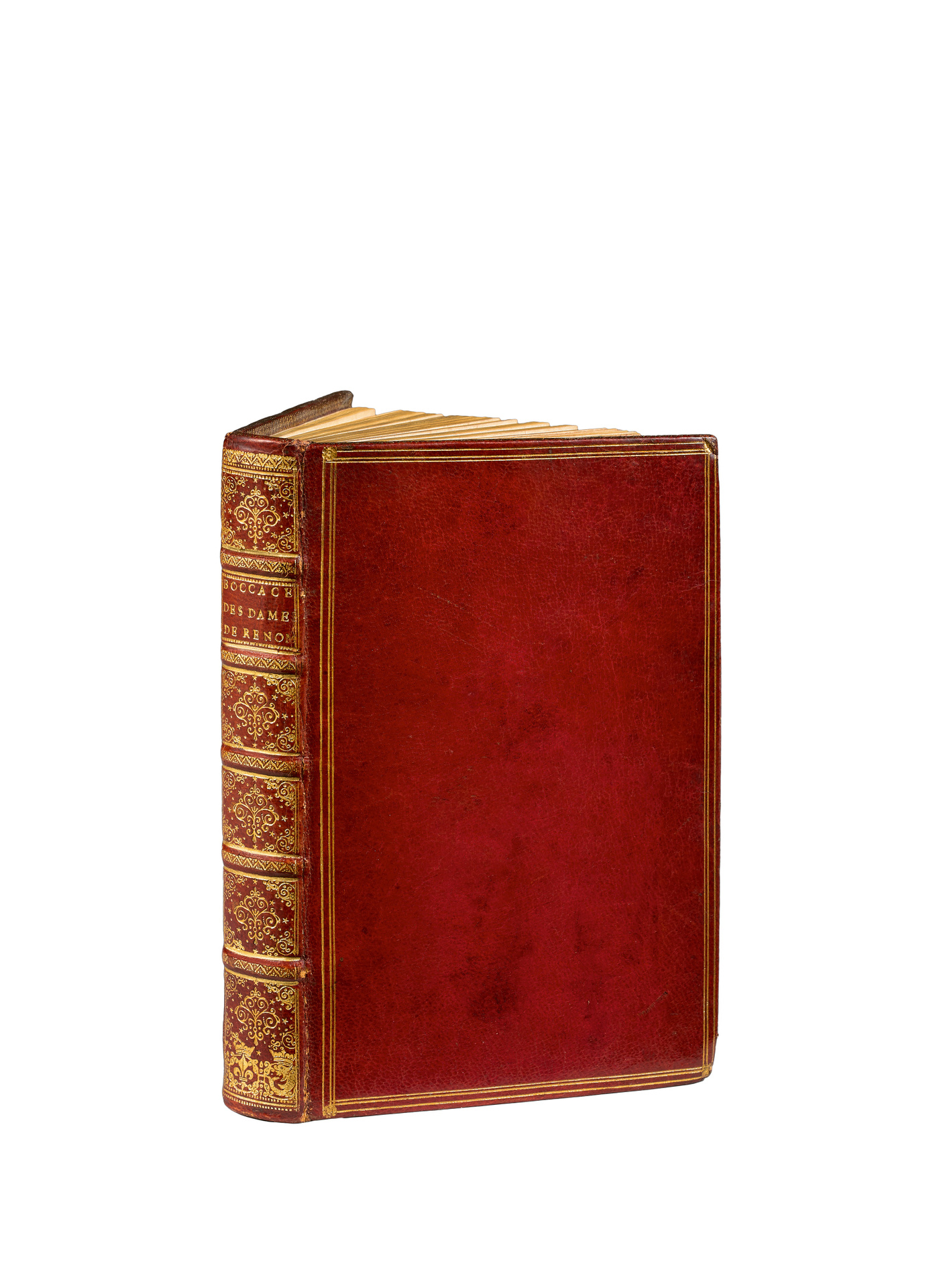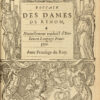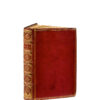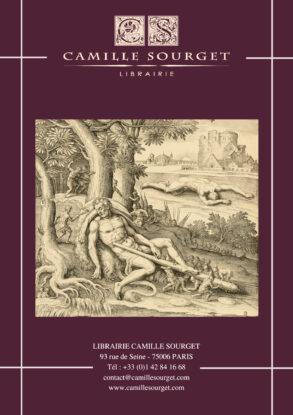Lyon, Guillaume Rouille, 1551.
12mo [158 x 101 mm] of 384 pp., (4) ll, the last one doubled, numerous ornamented initials, two tiny holes in title, small stain in lower margin of pp. 17-20. A fine copy.
Red morocco, triple gold fillet around the covers, spine ribbed richly decorated with the special crowned dolphin lace at the foot, decorated edges, inner gilt roulette, gilt edges on marbling. Bound in the 17th century.
One of Boccaccio’s most famous works, the ‘De claris mulieribus’, written in Latin around 1360, is a book both erudite and amusing, intended for a wide audience. Following the model of Petrarch’s Hommes illustres, Boccaccio recounts the lives of 104 famous women, queens and courtesans, virtuous and promiscuous, from Eve to Pope Jeanne.
First edition of this translation by Denis Sauvage. This is the first French translation after the Italian version, due to Denis Sauvage; it replaced that which L.A. Ridolfi had given according to the Latin original.
Written in 1361-1362, Boccaccio’s De mulieribus claris (The Illustrious Women) is the first collection of women’s biographs in western history.
Inspired, by Boccaccio’s own admission, by his friend Petrarch’s De viris illustribus (The Illustrious Men), this work offers a reasoned compilation of “stories”, both pagan and Christian, of remarkable women, whose excellence, in good or evil, Boccaccio highlights, even if it means drawing from this “evil” the appropriate moral lesson. We thus find the great figures traced by Titus Livius, Pliny the Elder or Suetonius, but also from Saint Jerome or the Bible (the book begins with a “biography” of Eve). There is certainly no lack of the traditional depreciatory remarks, inherited from the two antiquities, on the weakness of women’s character, but in the praise of figures such as Nicostrata or Epicharis, a certain evolution of mentalities is already apparent, provoked by the prodromal stages of humanist reflection on female virtues.
This book, quickly translated into French (Laurent de Premierfait) or into German (Heinrich Steinhöwel), strongly marked its time, since Chaucer drew on it for The Canterbury Tales and Christine de Pisan, in 1405, for her Livre de la cité des dames.
In this newly inspiring work, Boccace therefore gives the modern reader an overview, vast and often picturious, of medieval attitudes to women, at a time when the renascent elites were going to change their view of women’s potential (Jean-Yves Boriaud, Les Femmes illustres / De Mulieribus claris).
“The work, written between 1360 and 1362, amplified and recast in later years, contains the biography of 104 famous ladies of all times, from Eve to Queen Joan of Naples; it is dedicated to the beautiful Andrée Acciaiuoli, sister of the great seneschal Nicolas Acciaiuoli, second wife of a Count of Altavilla.
The example of Petrarch and his treatise on illustrious men had a significant influence on Boccaccio, as he himself acknowledged. The narrative vein expands with some freedom, as in the pages devoted to the life of the papess Joan, the voluptuous length on the love affairs of Thisbe, and the story of the naive Paulina, a Roman beloved of the God Anubis, which is rather reminiscent of the tale of Lisette and the angel Gabriel in the Decameron. (…) Taken as a whole, the volume is a compromise between historical scholarship and storytelling, a pleasant book of scholarship, intended not only for men but also for women, – who, says Boccaccio, for his excuse, being accustomed to hear stories have a greater need of them and are entertained by a copious exposition.” T. F. G. Rouville.
Beautiful italic printing by Philibert Rollet with nice initials and some ornaments. The title is set in a remarkable wood frame reproduced by Baudrier.
Fine copy, of exceptional elegance, covered with a fine seventeenth century binding, the spine of which bears the crowned dolphin lace.
Label of the Pierre Berès bookshop on the first flyleaf (it appeared under n°32 of its 1951 catalogue Livres Français des quinzième & seizième siècles, at a price of 45 000 fr.)
